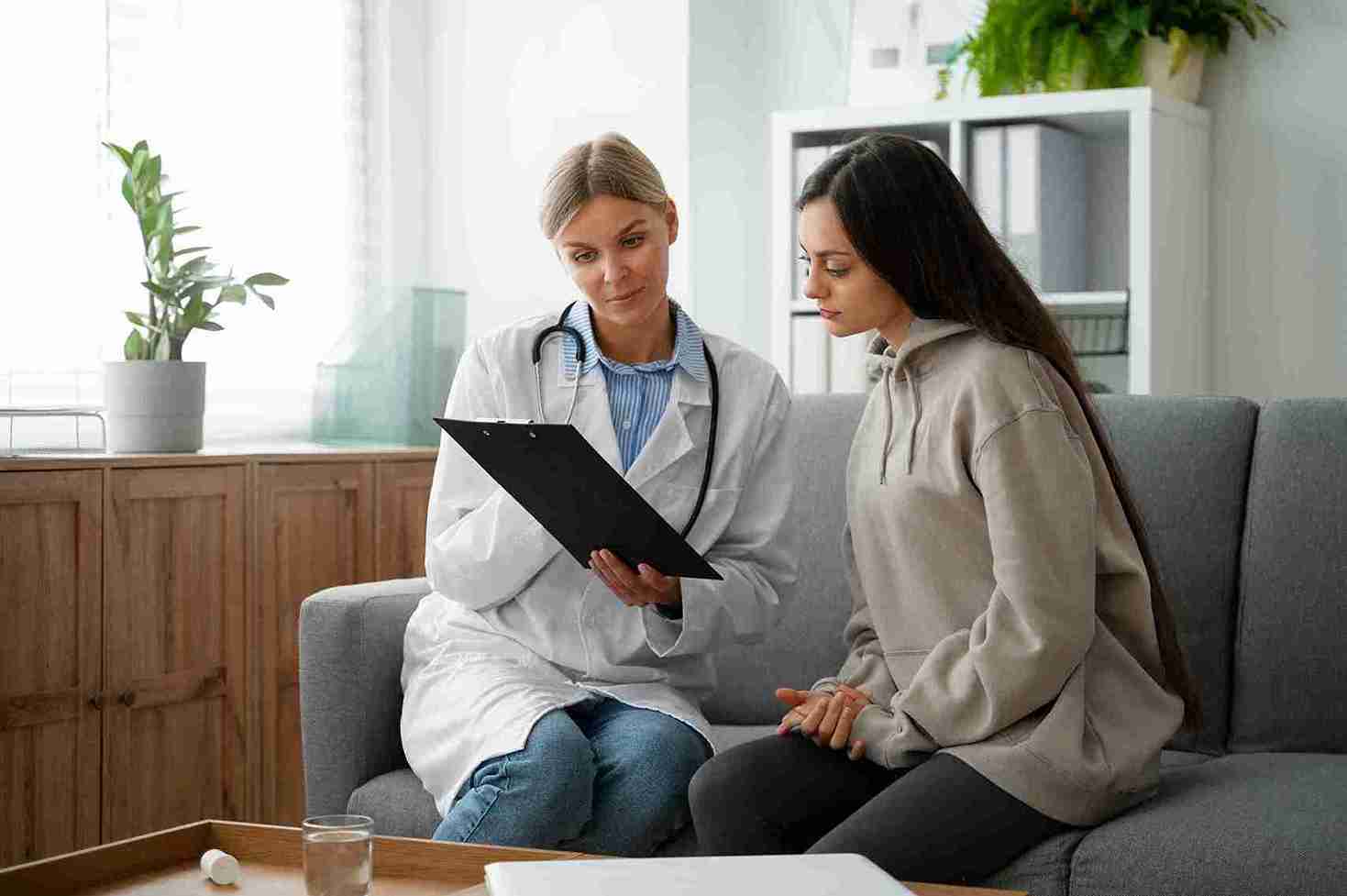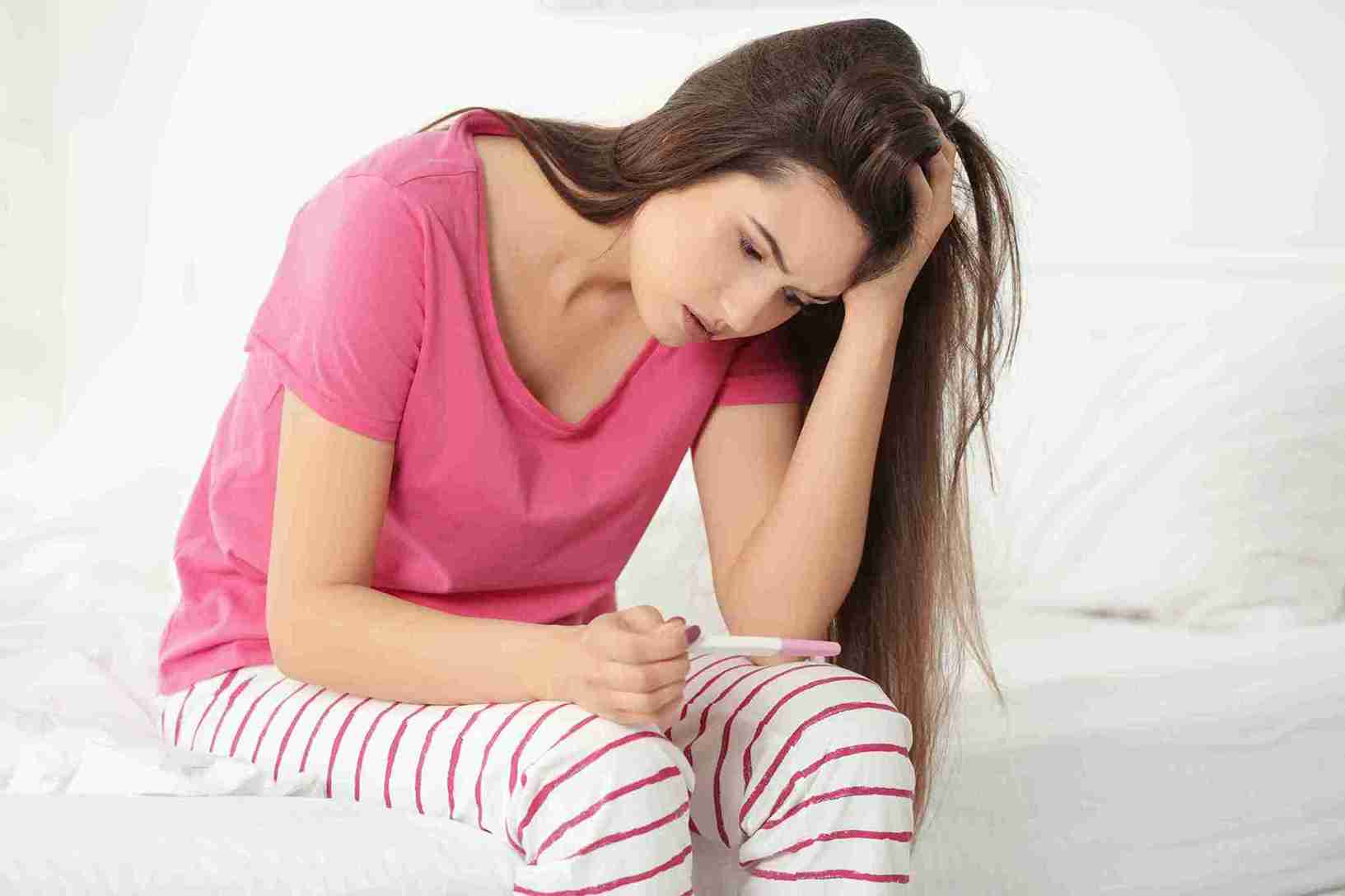
Menstruation is a complex process and happens when the uterine cavity lining sheds together with tissue and blood from the vagina. The pituitary gland and hypothalamus in the brain regulate this process. The hypothalamus controls the pituitary gland, which controls progesterone and estrogen release from the ovaries and ovulation. These hormones help the uterine lining to thicken, preparing the uterus for embryo implantation and pregnancy. Amenorrhoea refers to the absence of menstrual periods for three to six months. One in four women of reproductive age has this condition at least once. Continue reading to learn about the types, causes, symptoms and treatment.

Primary amenorrhoea is a condition where a girl has not had her first period, even after fifteen years or within five years of puberty, with signs like developing breasts.
Secondary amenorrhoea is when a woman has regular periods but stops for some reason for three to six months, or the cycle stops for six months and was previously irregular. The main reason for this condition is pregnancy. However, hormonal imbalances may also cause secondary amenorrhoea.
The most apparent amenorrhoea symptom is missing your monthly periods despite not being pregnant. You may also have:
● Headaches
● Vision changes
● Vaginal dryness
● Hot flashes
● Acne
● Milky discharge from nipples
● Excessive facial and body hair
Natural amenorrhoea can occur for reasons like:
● Breastfeeding
● Pregnancy
● Menopause
Some medications can cause your menstrual periods to stop. This includes drugs such as:
● Antidepressants
● Cancer chemotherapy
● Antipsychotics
● Allergy medications

Many women who use oral contraceptives may not experience regular monthly cycles. It may take time for menstruation and ovulation to return to normal after stopping them. Implanted or injected contraceptives may also lead to amenorrhoea, as do a few types of IUDs (Intrauterine Devices).
Numerous medical conditions can lead to hormonal imbalance and amenorrhoea, such as:
PCOS (Polycystic Ovary Syndrome): It leads to high hormone levels for a sustained period instead of fluctuations like in the regular menstrual cycle.
Thyroid Malfunction: Hyperthyroidism (overactive thyroid gland) or hypothyroidism (underactive thyroid gland) may lead to irregularities like amenorrhoea.
Premature Menopause: Menopause starts around 50 years of age. However, for a few women, egg reserve is reduced before 40, and periods stop.
Pituitary Tumour: A benign (noncancerous) tumour in the pituitary gland may alter the hormone control of menstruation.
Low Body Weight: Hormone function is interrupted due to excessively low weight (10% below average weight), potentially halting ovulation. Bulimia, anorexia or other eating disorders may also stop your regular menstrual cycles because of abnormal hormonal fluctuations.
Stress: Stress and menstrual cycle fluctuations go hand in hand. Stress affects the hypothalamus (a part of the brain that regulates hormones that control the menstrual cycle), albeit temporarily, leading to the stoppage of ovulation and menstruation. The regular menstrual cycle typically begins again after stress levels decrease.
Extreme Exercise: Women who undergo rigorous training or activities like ballet may find their monthly periods interrupted. Amenorrhoea can result from a combination of factors, such as high-calorie expenditure, low body fat, and elevated stress levels.
Problems with reproductive organs can lead to amenorrhoea. Some of them are:
Uterine Scarring: A condition called Asherman’s Syndrome where scar tissues accumulate in the uterine lining after D&C (dilation & curettage), uterine fibroid treatment or a cesarean section. This scarring inhibits the buildup and shedding of the lining of the uterus.
Missing Reproductive Organs: In some cases, developmental issues during the fetal stage can lead to the absence of reproductive organs such as the cervix, vagina, or uterus. When the reproductive system is not fully formed, having menstrual cycles may not be possible.
Vaginal Structural Abnormality: A vaginal obstruction can prevent menstrual bleeding by blocking the outflow of blood from the uterus and cervix, often due to a wall or membrane within the vaginal canal.

Amenorrhoea can cause problems which include:
Fertility Issues: If you don’t have monthly periods and don’t ovulate, you cannot conceive and get pregnant. If the cause of amenorrhoea is a hormonal imbalance, it may also lead to miscarriage and other pregnancy complications.
Stress: Not having a regular menstrual cycle when your peers have theirs may be stressful, especially for young adults transitioning to adults.
Pelvic Pain: If structural problems are causing amenorrhoea, it may lead to pelvic pain.
Cardiovascular Disease And Osteoporosis: Low oestrogen levels are a key cause, increasing the risk of cardiovascular disease—which can affect the heart muscles and blood vessels and raise the risk of heart attacks—and osteoporosis, which leads to brittle bones.
If you miss more than one menstrual cycle, consult your doctor. They will check your medical and menstrual history and symptoms and perform a pelvic exam. Your healthcare provider may also recommend the following tests:
● Blood tests to determine hormone levels to check for adrenal gland or thyroid disorders
● Pregnancy test
● Genetic testing if below 40 and have ovarian insufficiency
● Ultrasound if they suspect issues with the uterus or ovaries
● MRI if the doctor suspects pituitary gland problems
If the cause of this condition is not menopause or pregnancy, diagnosing it can be a challenge. Your doctor may need you to track your menstrual cycle changes and history. Use a journal to note:
● Medications taken
● Date of last period
● How many days it lasts
● Changes in exercise or diet
● Stress or other emotional challenges
If your periods have stopped due to natural causes like pregnancy, breastfeeding, or menopause, no treatment is needed. For other conditions, the treatment depends on the root cause, which may include:
● Exercise and diet to maintain healthy, optimal weight
● Managing stress
● Reducing the intensity of exercise
● Medication, especially for PCOS and amenorrhoea
● Surgery in rare cases
In addition to the treatments for managing amenorrhoea, supportive therapies may include:
● Oestrogen therapy to relieve vaginal dryness and hot flashes
● Vitamin D and calcium supplements for bone strength
● Strength training to support muscle tone
Maintaining good health can prevent secondary amenorrhoea.
● Follow a proper and healthy diet and exercise plan that suits you
● Journal your menstrual cycle so that you know when you miss a period
● Get a pap test and a pelvic exam regularly
● Aim for restful, uninterrupted sleep each night

If the underlying cause is treated, your periods may return but may take some time to get regular. However, in cases of health problems, talk to your healthcare provider about treatment and fertility options if you want to become pregnant.

Hypothalamic amenorrhoea is a type of amenorrhoea caused by a disruption in the hypothalamus, the part of the brain that regulates hormones. Unlike other types, its root cause lies in the brain rather than the reproductive organs.

An overactive or underactive thyroid disrupts the menstrual cycle, leading to amenorrhoea.

Birth control pills or other medicines can impact periods by potentially causing shorter, heavier, lighter or prolonged periods or even missed periods, depending on the medication and your body.
